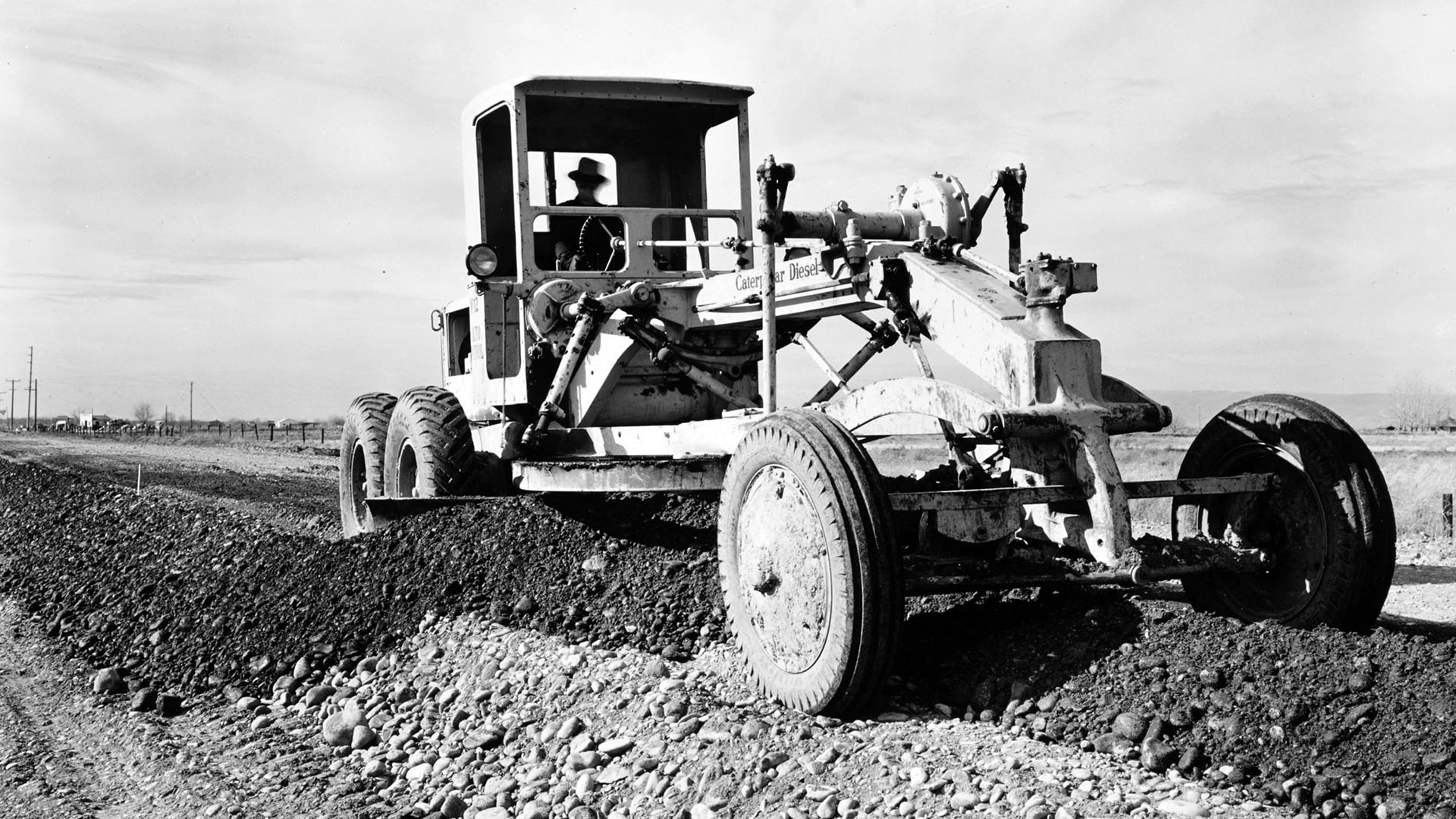Even during the height of the Great Depression Caterpillar continued developing cutting-edge new products. In July 1938, Caterpillar’s Road machinery division launched a new machine called the Caterpillar Diesel No.12 Auto Patrol. It was renamed a motor grader just one year later, and it remained part of the product for 81 years. The Diesel No.12 went on to be the most recognized, and longest running model in the Caterpillar product line of motor graders.
What Made It Special
In 1938 the Caterpillar Diesel No.12 was successfully demonstrated to an enthusiastic group of Cat dealers in Peoria, IL. Its design was unique and is the origin of the modern motor graders we see today. But in addition to being stylish, the No.12 was also a heavy-duty, self-propelled road grader designed for efficient and economical road building and maintenance work.
Weighing in at 20,360 lbs the No. 12 had a range of useful blade positions, surpassing all competitors of its time. In addition to high and low bank-cutting positions, the blade could be turned completely around, facing backwards, which meant an operator could continue to do work while driving in reverse. This feature was valuable for subgrade work, shaping bad spots, working short stretches, or where turning was difficult.
With the blade now mounted in the center position on the blade beams, the new Auto Patrol also permitted a correct ditching position on either side, with the toe of the 12-foot blade directly behind the front ditch wheel and ample clearance to prevent clogging.
Its six-cylinder Caterpillar diesel engine delivered 66 brake horsepower and was mounted over the driving axle to best utilize its weight in preventing wheel slippage. A gasoline starting engine ensured easy starting regardless of atmospheric temperatures.
The transmission offered six forward speeds and two in reverse. A low speed provided both maximum pull for the heaviest jobs and more precision for fine grading. Second speed permitted faster operation for most ditching and other heavy work. The higher gears provided an ample speed range for a mix of road work, snow removal and travel.
The Caterpillar Diesel No. 12 Auto Patrol was even equipped with two-speed powered mechanical blade controls. A simple shift of a lever gave the operator faster control for the longer blade movements required by coarse work. For close finishing work, a slower control setup provided extreme accuracy in blade settings.
Major Projects
In its first year alone, the No. 12 worked on many well-known and important projects around the world:
- Shasta Dam in Northern California
- Los Angeles Aqueduct in California
- Altamont Pass Road in California
- All American Canal in California
- Valecito Dam in Colorado
- Buzzard's Roost Dam in Georgia
- Tionesta Dam in Pennsylvania
- Skyline Highway in Virginia and the Carolinas
- New York Aqueduct
- Three large reservoirs in England
- Haifa-Bagdad Highway in the Middle East
81 Years of Evolution
The No. 12 Motor Grader seen multiple advancements during its 81 years. The 12E was the last to have the full mechanical gear drives for blade movements (also known as knuckle busters) In 1965 12F was introduced and featured new power-assisted planetary operated blade controls and the D333 engine was boosted to 125 flywheel horsepower. Power steering was now standard rather than an option. The 12F was the last straight framed grader.
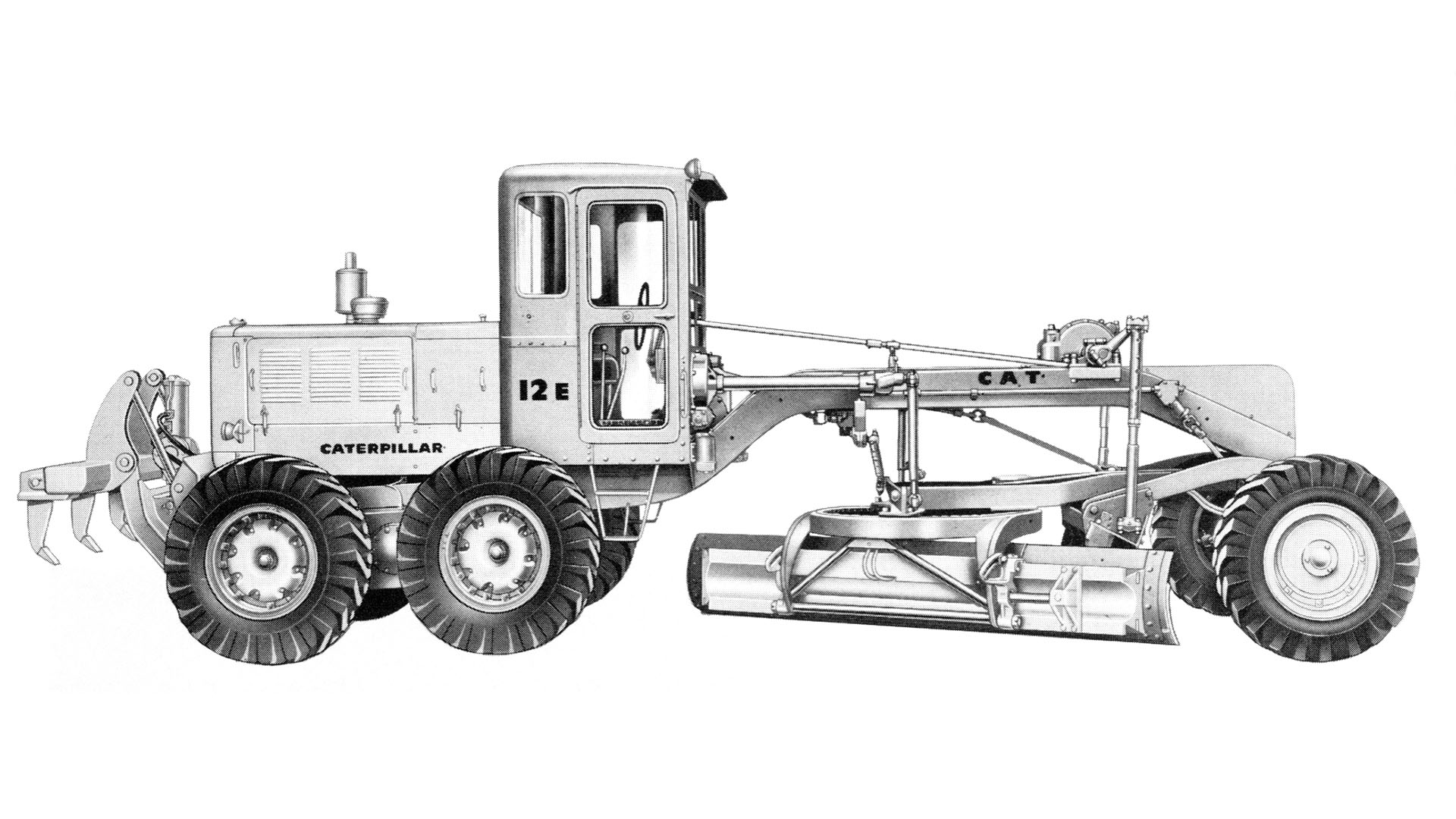
1973 saw a notable design change to the No.12 product when Caterpillar introduced articulated frames into its Motor Grader product line with the 12G, along with the articulating frame the G series brought a fully hydraulic controlled blade. The 12H increased productivity even further with a new electronically controlled eight-speed transmission and a redesigned cab providing operators with a better view when it was released in 1995.
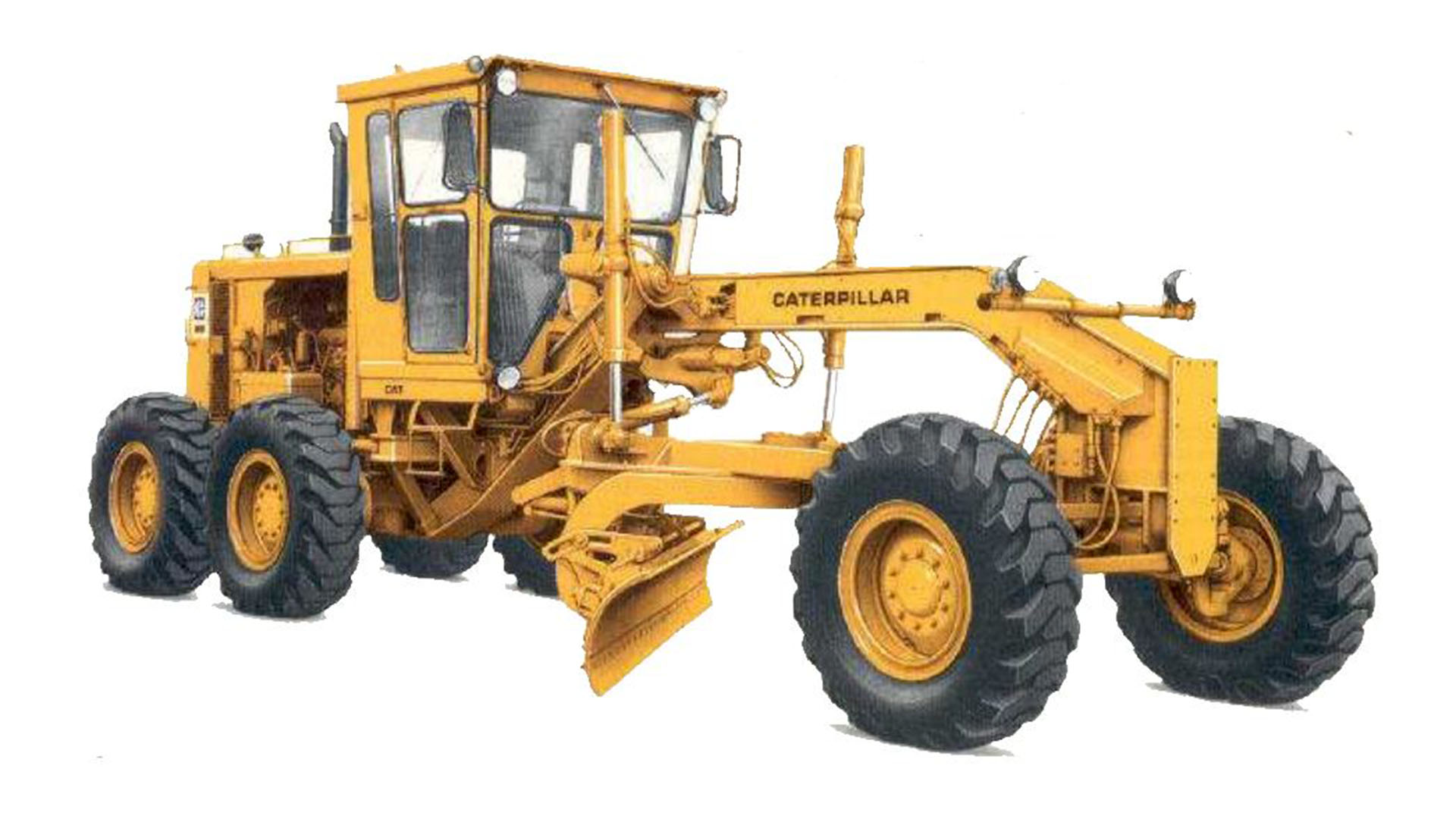
In 2007 Caterpillar changed the motor grader world forever releasing the M series. The 12M featured joystick control for easier and more efficient operating. A pair of joysticks replaced as many as 15 levers and a steering wheel. Due to the many controls required and the precision work performed by motor graders, they are widely regarded as the most difficult of all earthmoving machines to operate. Caterpillar designed the M-Series joystick control system to make the motor grader easier to learn and less fatiguing. In fact, the joysticks reduced operator movements in the cab by 78%. The new controls brought a new cab with angled doors making visibility to the DCM (drawbar, circle, moldboard) much easier.
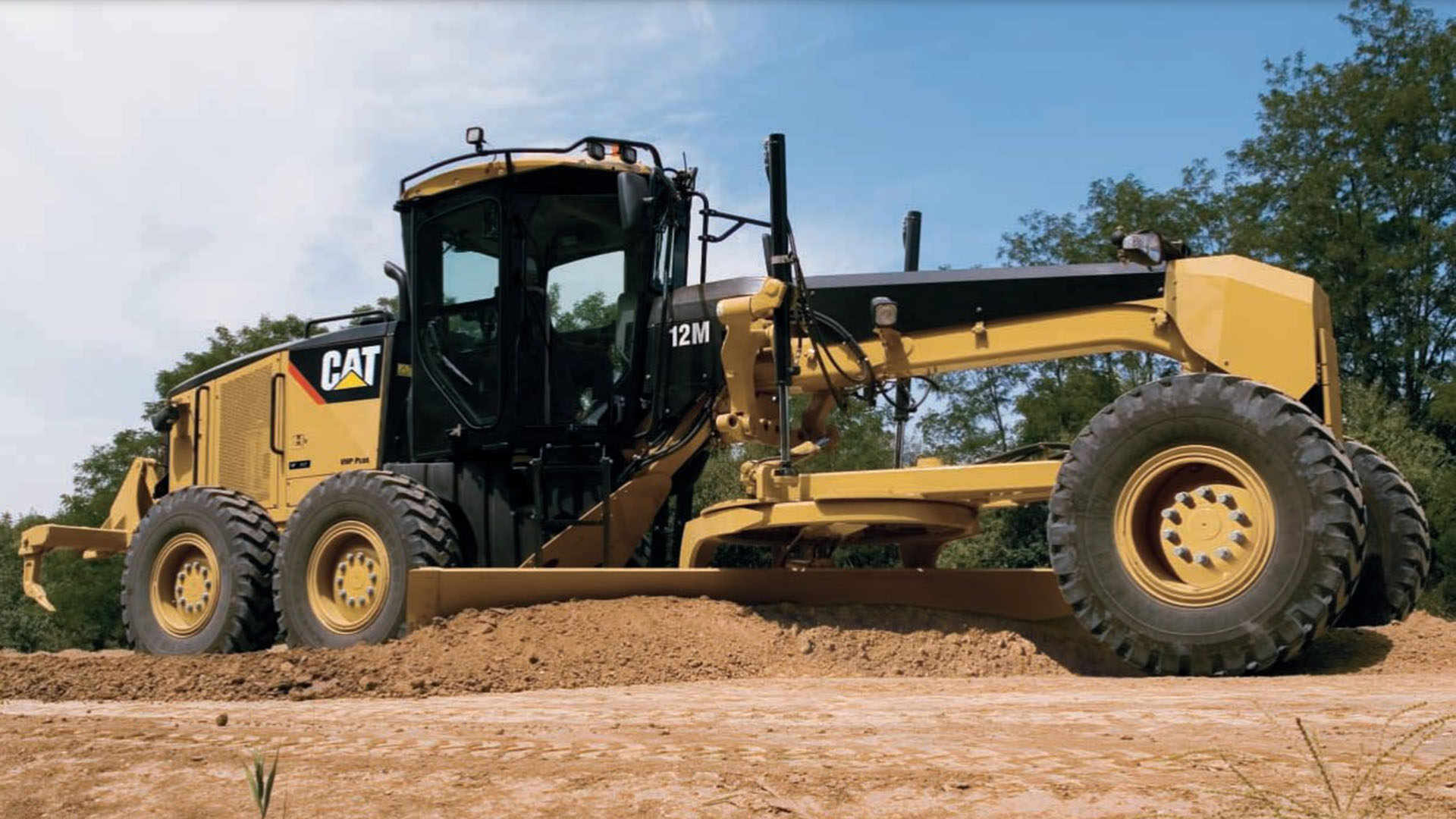
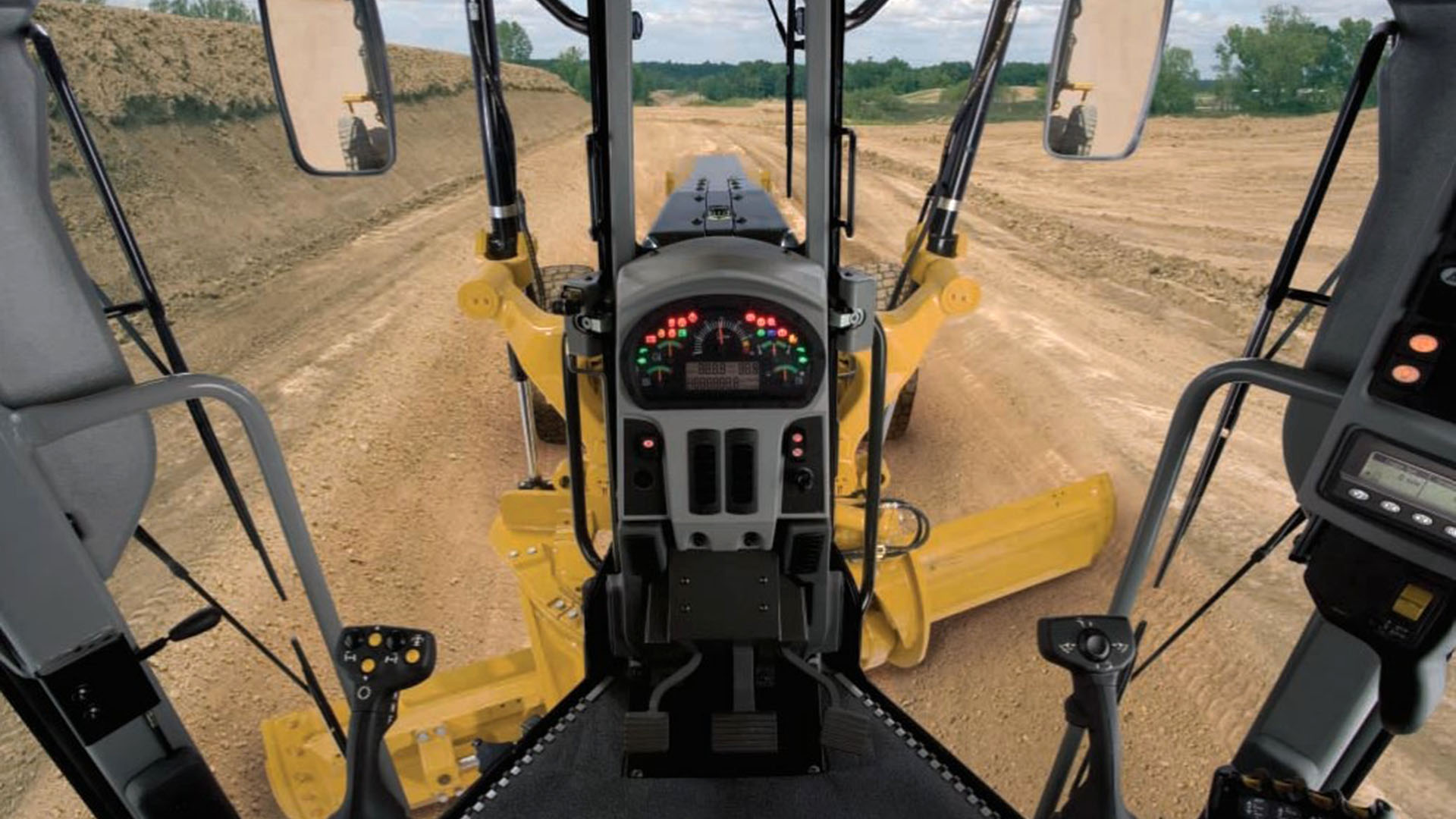
Where Is It Today?
In 2019 Caterpillar made the decision to retire the No. 12, and to rebrand the motor grader product lines. The 12M3 was rebadged as the 140, and the 140M3 rebadged as a new model the 150. This brought the product models into more consistency. The construction motor grader models consist of 3 digits, 120, 140, 150 and the 160. While the mining motor grader models consist of 2 digits, 14, 16, 18, and 24.
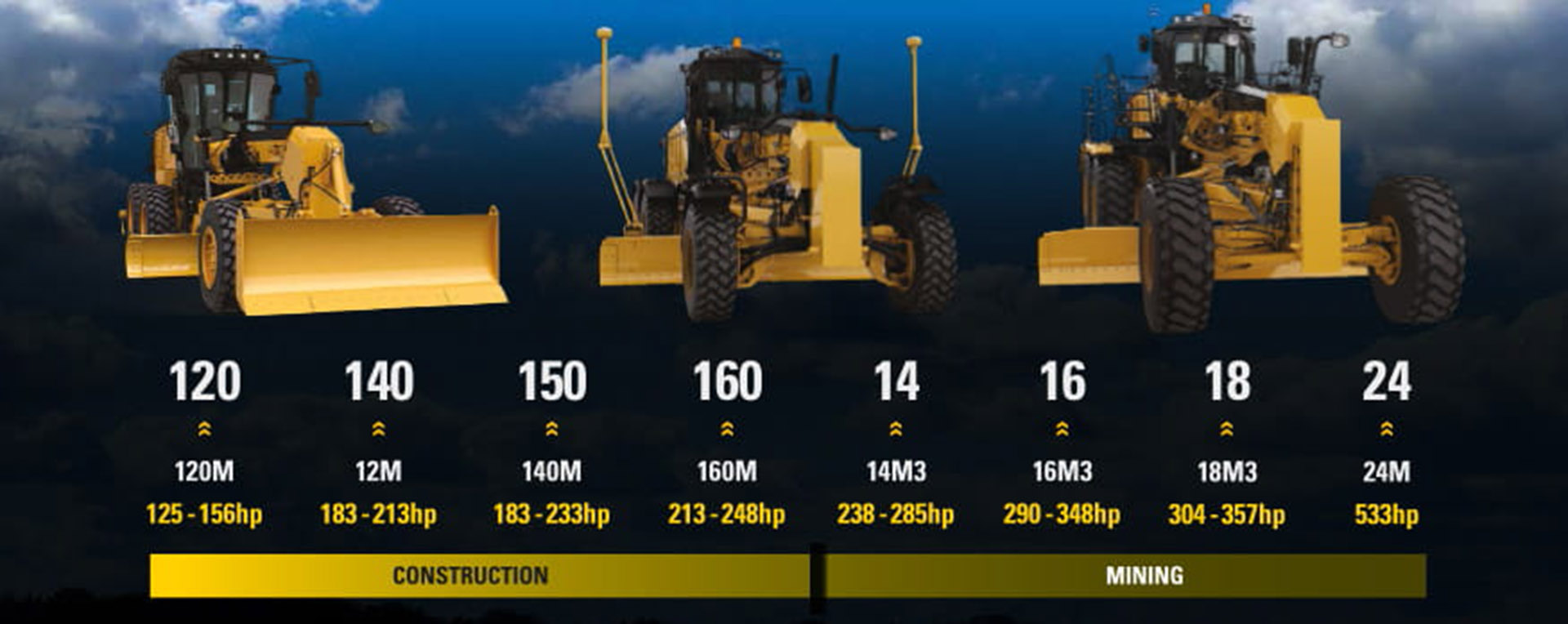
The DNA of the Diesel No. 12 is still in the product line today, where it is known as the Cat 140. With 81 years of service, it was the longest-running production model in the Caterpillar Motor Grader product line.
All information in this article was sourced from Caterpillar Inc’s website
